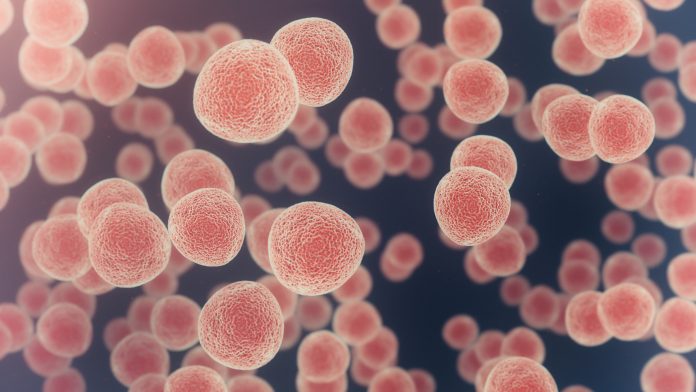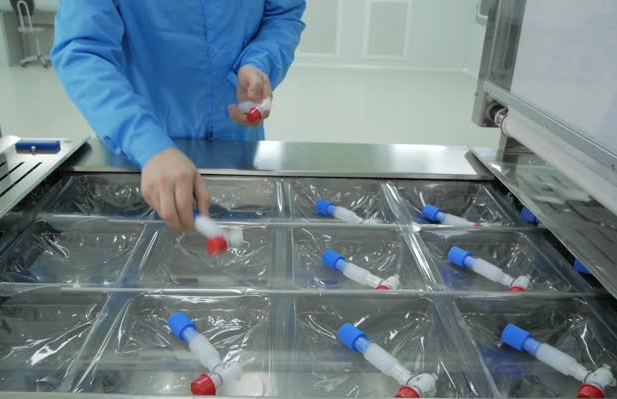
New York University scientists have discovered that cancer cells collaborate to extract nutrients from their environment—a previously overlooked process. Their in vitro studies, along with follow-up research in mice, suggest that targeting this cooperative behavior could offer a new approach to cancer treatment.
“We identified cooperative interactions among cancer cells that allow them to proliferate,” said Carlos Carmona-Fontaine, PhD, an associate professor of biology at New York University and senior author of the paper in Nature, titled, “Cooperative nutrient scavenging is an evolutionary advantage in cancer.” “Thinking about the mechanisms that tumor cells exploit can inform future therapies.”
Scientists have long known that cancer cells compete with one another for nutrients and other resources. Over time, a tumor becomes more and more aggressive as it becomes dominated by the strongest cancer cells.
However, scientists also know that living organisms cooperate, particularly under harsh conditions. For instance, the authors noted, penguins form tight huddles to conserve heat during the extreme cold of winter, with their huddles growing in size as temperatures drop—a behavior not observed during warmer months. Similarly, microorganisms such as yeast work together to find nutrients, but only when facing starvation. “… starvation can drive microorganisms to display cooperative strategies that are absent or redundant under more favorable conditions,” the team stated.
Cancer cells also need nutrients to thrive and replicate into life-threatening tumors, but they reside in environments where nutrients are scarce. Is it possible that cancer cells work together to scavenge for resources? “Although competition is certainly critical for tumor evolution and cancer progression, cooperative interactions within tumors are also important, albeit poorly understood,” the researchers continued. “As nutrient scarcity is a defining feature of the tumor microenvironment, we reasoned that cooperative feeding mechanisms may be favored by cancer evolution.”
To determine whether cancer cells cooperate, the researchers tracked the growth of cells from different types of tumors. Using a robotic microscope and image analysis software they developed, the team quickly counted millions of cells under hundreds of conditions over time. This approach allowed them to examine tumor cultures at a range of densities—from sparsely populated dishes to those crowded with cancer cells—and with different levels of nutrients in the environment.
It is well-known that cells uptake amino acids in a competitive manner. But the researchers found that when cancer cells were starved of the amino acid glutamine, they needed to work together to acquire the available nutrients. “… all cell types that we tested showed a strong need to cooperate when starved of glutamine—a non-essential amino acid that is almost universally required as a cell culture supplement,” the scientists reported.
“Surprisingly, we observed that limiting amino acids benefited larger cell populations, but not sparse ones, suggesting that this is a cooperative process that depends on population density,” added Carmona-Fontaine. “It became really clear that there was true cooperation among tumor cells.”
Through additional experiments with skin, breast, and lung cancer cells, the researchers determined that a key source of nutrients for cancer cells came from oligopeptides—pieces of proteins made up of small chains of amino acids—found outside the cell. “All of the cell types that we studied were able to use oligopeptides to grow exclusively at high cell densities, suggesting that this may be a conserved cell-feeding mechanism,” they stated, concluding that tumor cells “cooperate to scavenge amino acids from extracellular oligopeptides.”
Carmona-Fontaine further explained that the team found that where this process becomes cooperative is that instead of grabbing these peptides and ingesting them internally, tumor cells secrete a specialized enzyme, CNDP2, that digests these peptides into free amino acids. “Because this process happens outside the cells, the result is a shared pool of amino acids that becomes a common good.”
The researchers identified the enzyme as CNDP2 by testing different drugs to see if they kept tumor cells from digesting oligopeptides into free amino acids. When the drug bestatin was applied to cancer cells, inhibiting the function of CNDP2, cells were unable to feed on oligopeptides and were driven to extinction. “Bestatin is a competitive aminopeptidase inhibitor with low clinical toxicity,” they noted. “It is approved for use as a chemotherapy adjuvant in Japan, but it exhibits low antitumoural activity on its own.”
Experiments showed that bestatin prevented oligopeptide utilization in every cell type tested, including a large panel of skin, lung, breast, colon, and pancreatic tumor cell lines, non-transformed cell lines, and primary bone-marrow-derived macrophages, the team explained. “In all cases, we were able to rescue the effects of this inhibitor by adding free glutamine, thereby ruling out non-specific or toxic effects of bestatin.”
Having identified CNDP2 as a factor behind the cooperative process feeding cancer cells, the scientists went on to test what happens when the enzyme is missing. They used CRISPR gene editing technology to delete (knock out) the Cndp2 gene in tumor cells. They then looked at how these cells formed tumors in mice, and compared the growth of these tumors to those formed by identical cells that still carried the Cndp2 gene. The team found that the growth of the knockout tumors was significantly reduced, a difference that was even more pronounced when the deletion of Cndp2 was combined with restricting the tumor’s access to amino acids using diets low in these nutrients. The investigators were also able to reduce the growth of tumors with normal CNDP2 by combining these diets with bestatin, a combination that could help in the clinic.
“Because we’ve removed their ability to secrete the enzyme and to use the oligopeptides in their environment, cells without CNDP2 can no longer cooperate, which prevents tumor growth,” said Carmona-Fontaine. “Competition is still critical for tumor evolution and cancer progression, but our study suggests that cooperative interactions within tumors are also important.”
The researchers hope that their findings will help inform cancer treatments that target cooperation among cancer cells, “a conceptual contribution that will have an impact in the clinic,” said Carmona-Fontaine. For instance, the drug bestatin has been safely used in humans for decades as an add-on to chemotherapy, particularly in Japan, but has limited effectiveness on its own.
“We hope that a clearer understanding of this mechanism can help us make drugs more targeted and more effective,” continued Carmona-Fontaine. In their report, the team stated, “We conclude that the cooperative catabolism of extracellular peptides is an evolutionary advantage for malignant clones in the tumor microenvironment. In our mouse models, inhibition of this process can markedly reduce tumor growth without major effects on overall mouse health. We thus propose that CNDP2-mediated cooperation can be an effective and specific target for cancer treatment.” And beyond its importance to cancer, the team noted, “… to our knowledge, this is a previously unrecognized mechanism used by mammalian cells to scavenge nutrients.”








![Best Weight Loss Supplements [2022-23] New Reports!](https://technologytangle.com/wp-content/uploads/2022/12/p1-1170962-1670840878.png)




